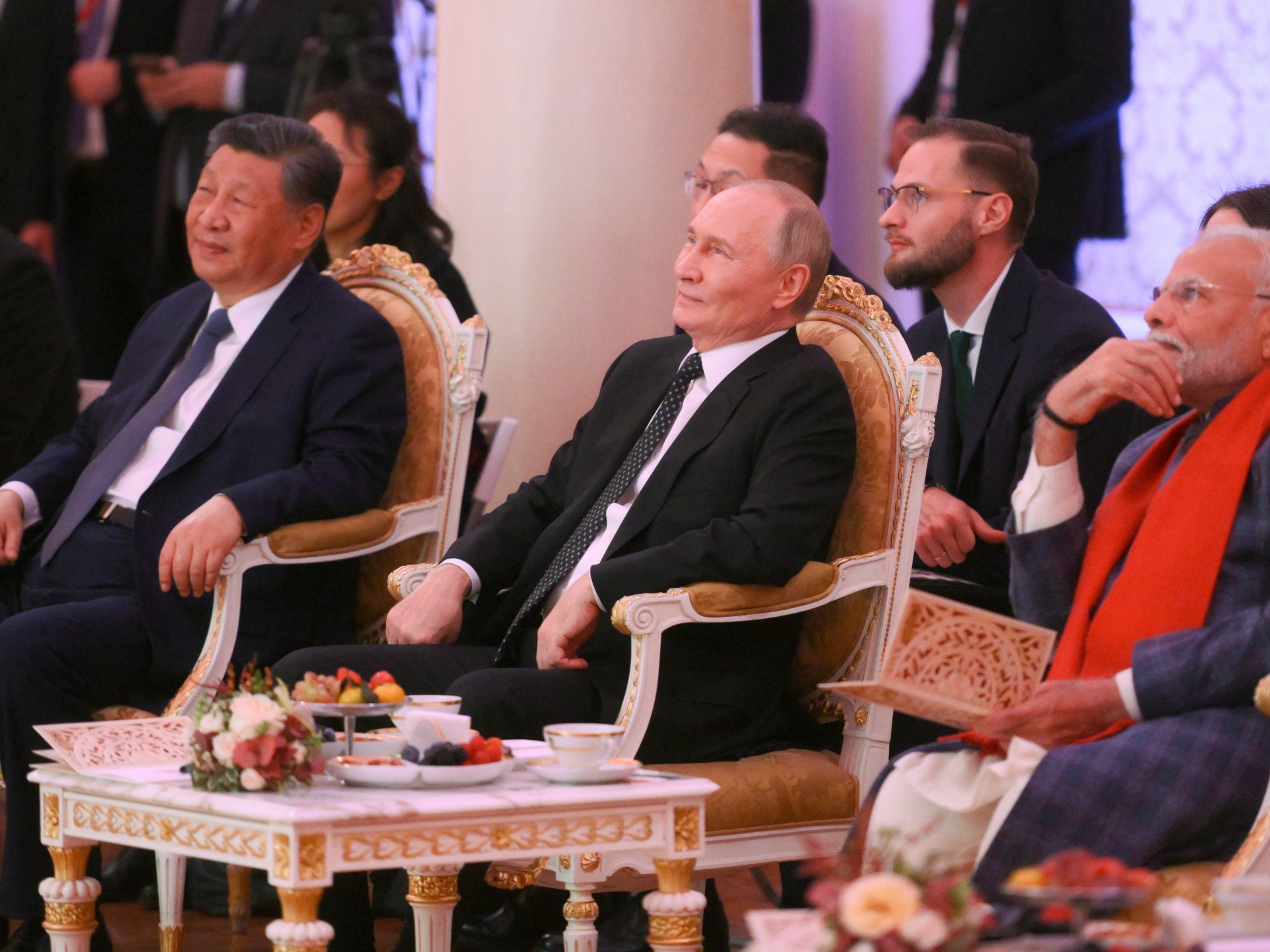
New Delhi, India — For those who make a living studying body language, there was plenty to read during the BRICS summit this week in Kazan, Russia.
There were the images of Russian President Vladimir Putin, far from isolated on the global stage despite his war on Ukraine, standing next to leaders from 36 countries, nearly two dozen of them presidents or premiers. There was the shot of Indian Prime Minister Narendra Modi, fresh from meeting with Ukrainian President Volodymyr Zelenskky in recent weeks, hugging Putin for the second time in three months.
But to many analysts, the most significant photo was one where Putin sat, flanked by the leaders of the world’s most populous nations, Chinese President Xi Jinping and India’s Modi. For Putin, as host of the BRICS summit, had provided the setting for a detente that had seemed unlikely just weeks earlier.
Modi and Xi met on the sidelines of the summit, their first full-fledged bilateral dialogue in five years, in an attempt to reset a long troubled relationship that had fallen off the cliff after a bloody clash along their contested border in Ladakh in 2020. At least 20 Indian soldiers and four of their Chinese counterparts died in heated hand-to-hand combat with rocks, clubs and staves, parts of which were captured on smartphone video and shared around the world, shaping public opinion in both nations.
The Modi-Xi meeting came two days after Indian Foreign Secretary Vikram Misri announced that the two sides had come to an agreement for their troops to disengage from locations along their disputed frontier where they had been locked in standoffs since 2020. The deal allows the two armies to restart patrolling their sides of the border according to an agreed schedule.
That breakthrough will echo beyond India and China, say some scholars.
“The India China detente is the most significant geopolitical development in Asia this year,” said Zorawar Daulat Singh, author of the book, Powershift: India-China Relations in a Multipolar World. “It means that India has decided to remove itself from US cold war plans.”
Singh was referring to concerns among a section of India’s strategic community that New Delhi has increasingly been relying too much on its friendship with Washington to push back against Beijing’s assertiveness in South Asia and the Asia Pacific.
Both India and the United States view China as their principal geopolitical rivals and have strengthened bilateral security cooperation dramatically over the past two decades. In recent years, they have also formed – with Japan and Australia – the Quad, a grouping with the unstated but clear aim of countering China’s strategic ambitions in the Asia Pacific, where Beijing’s territorial claims in the South China Sea have sparked tensions with its neighbours.
But other analysts say that key questions about the border agreement between India and China remain unanswered, and the future of ties between them is still deeply uncertain.
After the 2020 clash in the Galwan region of Ladakh, the countries had amassed tens of thousands of troops on their sides of the Line of Actual Control (LAC) their unmarked border with memories of their short but deadly 1962 war which India lost, revived.
However, multiple reports since have suggested that China has grabbed territory along the border that India previously held. And a paper presented at an Indian police conference in January 23 disclosed that the Indian Army had lost control of 26 out of 65 patrol points along the frontier.
Mohan Guruswamy, chairman of the New Delhi-based think tank, Centre for Policy Alternatives, pointed out that neither side had spelled out any details about the agreement announced by Misri at the start of the week, and confirmed by China the following day.
“There is no clarity about the Line of Actual Control (LAC) or the border that divides the cheerless landscape between the two countries,” said Guruswamy. “How do we know what has been decided as there are no details?”
Major-General Hemant Kumar Singh, a former officer of the Indian Army, who had been posted in the border region, echoed that question. “All right-thinking people would be happy with the forward movement, but we do not know whether the land that was occupied by China has been returned,” he said.
Modi and his government have insisted since 2020 that the Chinese have not taken any Indian territory. “No one has entered or occupied our land,” Modi had declared in June 2020, also insisting that China had not taken control of any Indian border posts. But the government has never explained why military commanders from the two sides had engaged in multiple rounds of border negotiations to restore the “status quo ante” if the border status as of 2020 had never changed in the first place.
Ashok Swain, professor and head of the Department of Peace and Conflict Research at Sweden’s Uppsala University, said he believes further bilateral military and diplomatic engagement will be needed if the sides are to return to a pre-2020 status in their border ties.
Beyond the future of the border, it is also unclear whether the agreement between India and China extends to attempts at resolving other challenges in the relationship.
The biggest among them are economic ties and, specifically, Chinese investment in India.
Soon after the 2020 clash, India banned TikTok and dozens of other Chinese-owned apps. More than 300 Chinese apps are currently banned in India. The Modi government kept Huawei out of 5G trials, while financial crimes investigators went after Chinese mobile phone firms like Xiaomi and Vivo. Many planned Chinese investment projects came under the increased scrutiny of government regulators.
However, with total foreign direct investment in India dropping for a second financial year in a row to March, policymakers have been suggesting a rethink. In February 2024, the chief economic adviser of the Indian Ministry of Finance Anantha Nageswaran made a strong plea for attracting investment from China.
Vipin Sondhi, a former chairman and managing director of Indian automobile major Ashok Leyland, and a major business influencer, told Al Jazeera: “There is merit in the businesses seeking investments from China. That will create more jobs and help India become part of global supply chain.”
Sondhi said he believes India needs Chinese investment in electronic vehicles, solar panels and batteries. His advice: India needs to “separate the strategic industry from what has civilian uses” when it comes to China so that it can mitigate any security risks without hobbling other areas of potential economic partnership.
China is comfortably the biggest source of India’s imports. Some of India’s most critical industries – such as its vaunted pharma sector – depend on raw ingredients from China.
With neither the Indian nor the Chinese government disclosing much detail of the agreement, speculation over its timing is rife within India’s strategic circles. Could India be sending a message to the West, where the US and Canada have both ramped up pressure on New Delhi in recent days over alleged Indian assassination plots against Sikh separatists in the diaspora?
Yet, retired Indian diplomat and strategic analyst Anil Trigunayat believes the calculation that drove India and China to a breakthrough is more straightforward. The deal, Trigunayat said, was part of attempts at restoring “calibrated normalcy in their political relations”. He pointed out how Modi and Xi have asked their national security advisers and foreign ministers to continue broader talks. “The zero-sum game has become pretty counterproductive,” he said.
But he added that the detente might not worry the West too much. India’s deeper strategic concerns over China, he said, won’t evaporate any time soon. They “will be difficult to overcome in the near term,” Trigunayat said.






